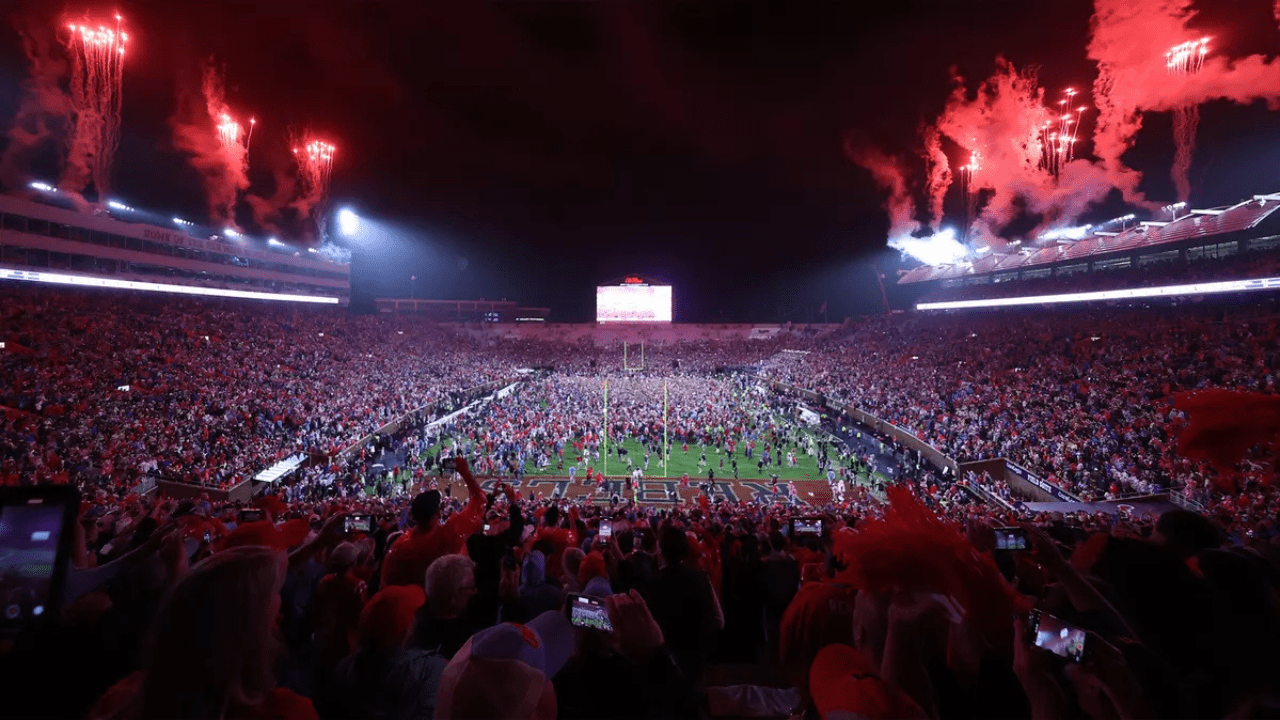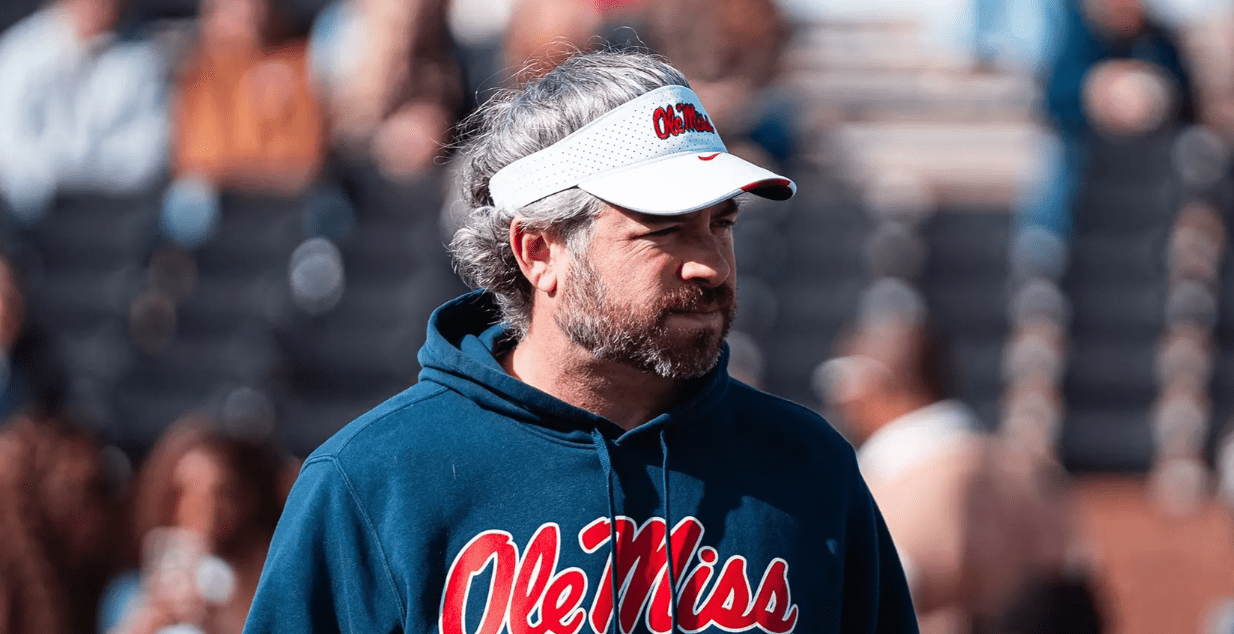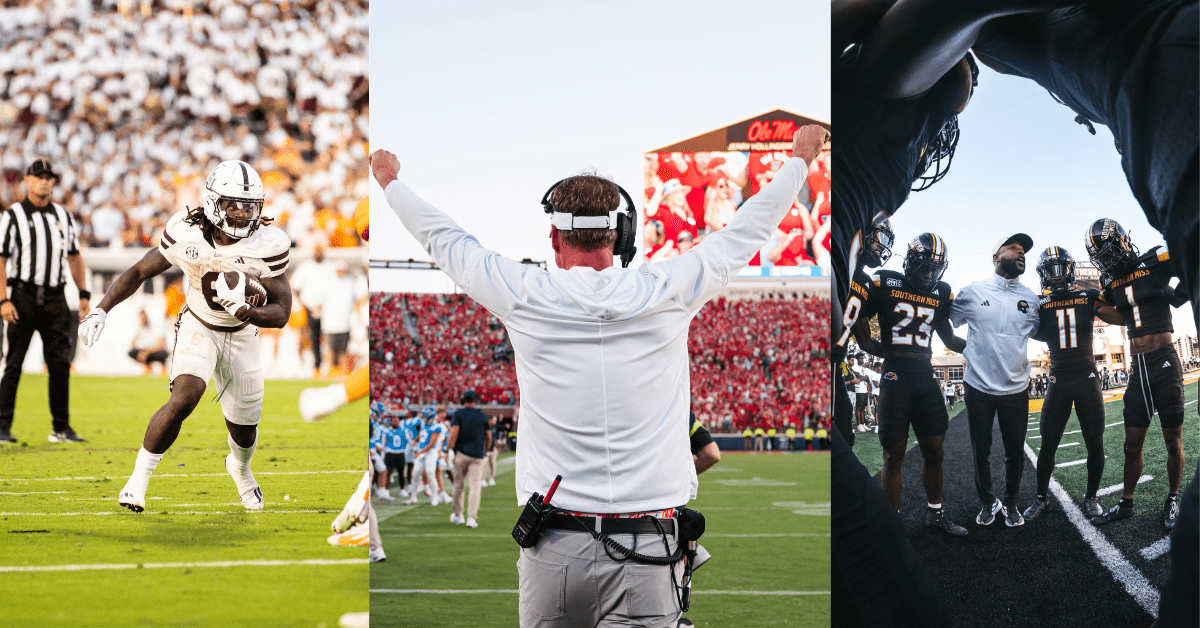
(Photo Courtesy of Ole Miss Athletics)
- The SEC schools strike an important balance of “academic rigor and social connectivity” that students find attractive.
A recent report by the news website Axios detailed the number of students from the Northeast who choose to head south for college.
More specifically, they were choosing to head to the SEC.
Axios gathered its data from IPEDS (Integrated Postsecondary Education Data System) which conducts a detailed survey annually of an institution that takes part in federal financial aid.
The Axios report took a look at a 10-year window from 2014-2023 that found 12 of the current 16 SEC schools showed increased numbers of students from the Northeast.
For eight of those 12 the increase was at least 80%.
For some it was remarkable.
LSU led the way with enrollment from the Northeast up 486%.
Tennessee was second at 387.7%, Ole Miss third at 230.1%.
Only Vanderbilt, Arkansas, Oklahoma and Missouri saw enrollment of Northeast students decline during that time.
You may think you know where this is headed, and you’re right at some level.
Football is a driving factor here, but not the only factor.
A lot of Southern schools have lower tuition rates than the popular private schools up north, and the Southern schools place an emphasis on merit-based scholarships, Jeff Selingo, an author of college admissions books, told Axios. Warmer weather is a plus, too.
The report is not the first of its kind, and it represents a trend long observed from the Southeastern Conference office in Birmingham.
As it has unfolded SEC leaders have not sat idly saying, “We built the culture, now y’all come.” Conference officials are engaged and working to take advantage of their advantage.
For the last 15 years the conference has hosted virtual and in-person “college tours.”
The “host” school for the virtual tour rotates, but the idea is to promote the entire conferences.
Recently, the SEC had more than 2,000 registrants from across the country for a one-hour virtual conference.
For the in-person conference, the SEC will choose a metropolitan area and set up in three locations around that area. Last year there were conference’s in two Chicago suburbs plus Milwaukee. More recently the SEC has set up around New Jersey and Philadelphia.
“The academic profiles, the athletic profiles, the artistic profiles and research portfolios of our institutions have made it such that high school counselors are now looking at us in a different way collectively,” LeNa’ McDonald, the SEC’s associate commissioner for academic relations told Magnolia Tribune. “Then the benefits of the region and the quality of life and experiences that can be gained on SEC campuses and in the South in general I think speaks to it even more.”
All SEC schools now carry a Research 1 Carnegie designation, McDonald said, which is defined by a threshold of $50 million in annual research spending and 70 or more research doctorates awarded annually.
SEC schools have a collective economic impact of $106.9 billion to state and local economies with more than 614,000 students currently enrolled and more than 4.8 million living alumni, she said.
“You can get a fantastic education, have incredible artistic and experiential learning opportunities and on top of that be in one of the best places geographically that there is to live,” McDonald said.
Then there’s that other thing.
School spirit and football are a big attraction, Axios reports.
“I think we can all agree that football in the South means more, pun intended,” McDonald said.
For all the good of virtual campus tours there’s no doubt a magnetism to the image of every fall Saturday of a hundred thousand fans having a rocking good time in a football stadium awash in vibrant colors or, in the evening, bright lights.
The data doesn’t imply that decisions are made with only football in mind. If it was, Georgia would not be ranked No. 5, Alabama No. 12.
There could be a political statement in the numbers as a number of schools on the east and west coasts have been the sites of pro-Palestinian protests and demonstrations that have resulted in arrests.
“Students have said to me, ‘I don’t want to go to college where everybody’s angry at each other, and everybody’s fighting over everything,’” Maria Laskaris, a counselor at a higher education consulting firm, told Axios.
McDonald doesn’t believe the draw is political.
“I can’t speak to why any one person would choose to attend, but I’m not too sure when, if it all, politics would be primary over any of these other reasons,” she said.
Instead, the SEC schools strike an important balance of “academic rigor and social connectivity” that students find attractive.
“The quality of education and attention that our states have paid to (both) flagship and land grant institutions … research has grown, opportunities to study different things have grown. All of those things coupled with, historically the cost of tuition being higher at private institutions in general, I think when you look at all that together you can see the value is different.”











